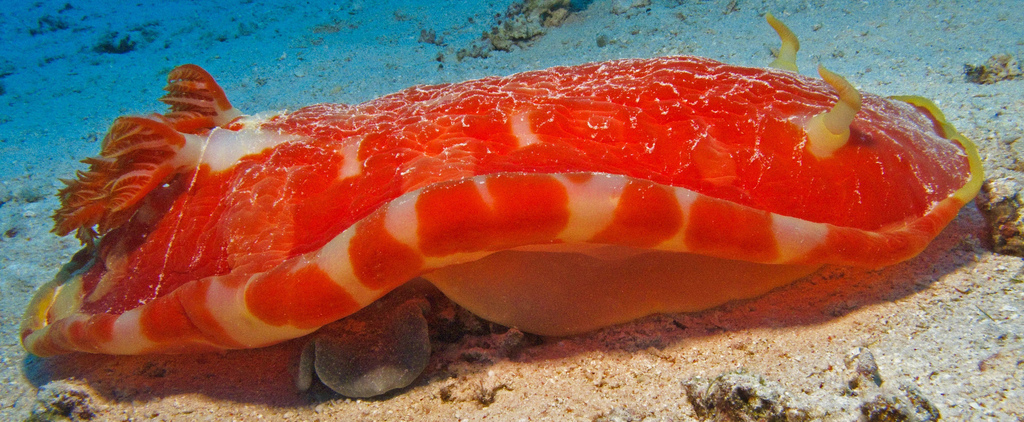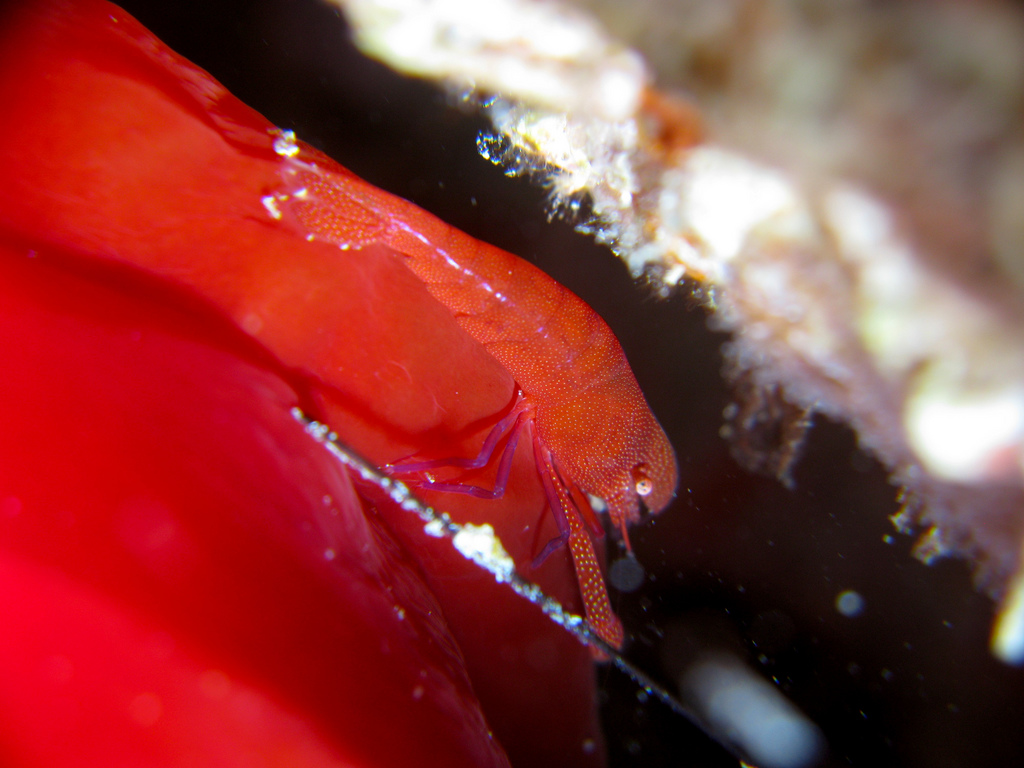Nutrition and Interactions
The Spanish Dancer is a carnivorous animal. The Spanish dancer loves to eat sponges. It feeds on at least 11 genera of sponges from 5 orders and 2 classes (Francis, 1980). Although they eat all different types of sponges, this nudibranch feeds on toxic sponges from the Halichondra family. The Spanish Dancer uses its radula to feed on these sponges which contain macrolides. The marcolides and Spanish dancer partake in a parasitic relationship. This means that that one of the organism benefits at the expense of the other. After consuming these sponges, the macrolides allow nudibranchs to produce a toxic chemical which is releases to defend its eggs from predators (Pawlik et al. 1988). This toxin is incredibly dangerous to many predators. It allows for developing nudibranchs a chance to survive. Since the Spanish dancer is full of toxic chemicals, predators avoid this creature as it swims freely around the reef. It takes the phrase "you are what you eat" very literally.
The Spanish Dancer shares another relationship with the Periclimenes imperator organism. This relationship is mutualistic. A mutualistic relationship is a relationship in which two different species associate with one another, while each recieveing benefits from the other. This organism is a tiny shrimp that lives inside the gills of the Spanish dancer nudibranch. Inside, the shrimp keeps the gills clean in exchange for a small amount of food supply. The shrimp are also provided with protection and a place to live as their red coloring provides camouflage from predators (Maui Ocean Center, 2013).

